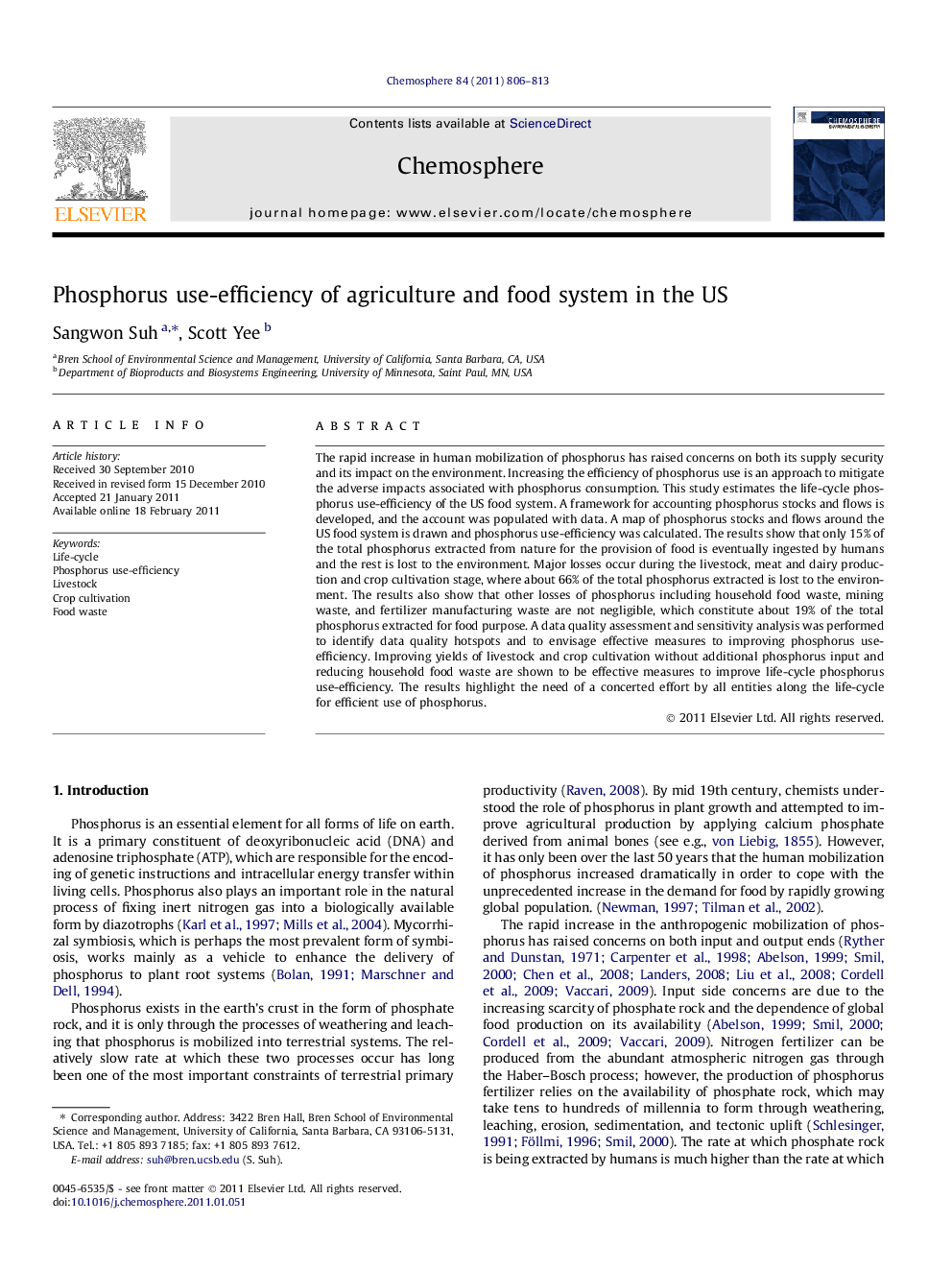| Article ID | Journal | Published Year | Pages | File Type |
|---|---|---|---|---|
| 4410565 | Chemosphere | 2011 | 8 Pages |
The rapid increase in human mobilization of phosphorus has raised concerns on both its supply security and its impact on the environment. Increasing the efficiency of phosphorus use is an approach to mitigate the adverse impacts associated with phosphorus consumption. This study estimates the life-cycle phosphorus use-efficiency of the US food system. A framework for accounting phosphorus stocks and flows is developed, and the account was populated with data. A map of phosphorus stocks and flows around the US food system is drawn and phosphorus use-efficiency was calculated. The results show that only 15% of the total phosphorus extracted from nature for the provision of food is eventually ingested by humans and the rest is lost to the environment. Major losses occur during the livestock, meat and dairy production and crop cultivation stage, where about 66% of the total phosphorus extracted is lost to the environment. The results also show that other losses of phosphorus including household food waste, mining waste, and fertilizer manufacturing waste are not negligible, which constitute about 19% of the total phosphorus extracted for food purpose. A data quality assessment and sensitivity analysis was performed to identify data quality hotspots and to envisage effective measures to improving phosphorus use-efficiency. Improving yields of livestock and crop cultivation without additional phosphorus input and reducing household food waste are shown to be effective measures to improve life-cycle phosphorus use-efficiency. The results highlight the need of a concerted effort by all entities along the life-cycle for efficient use of phosphorus.
